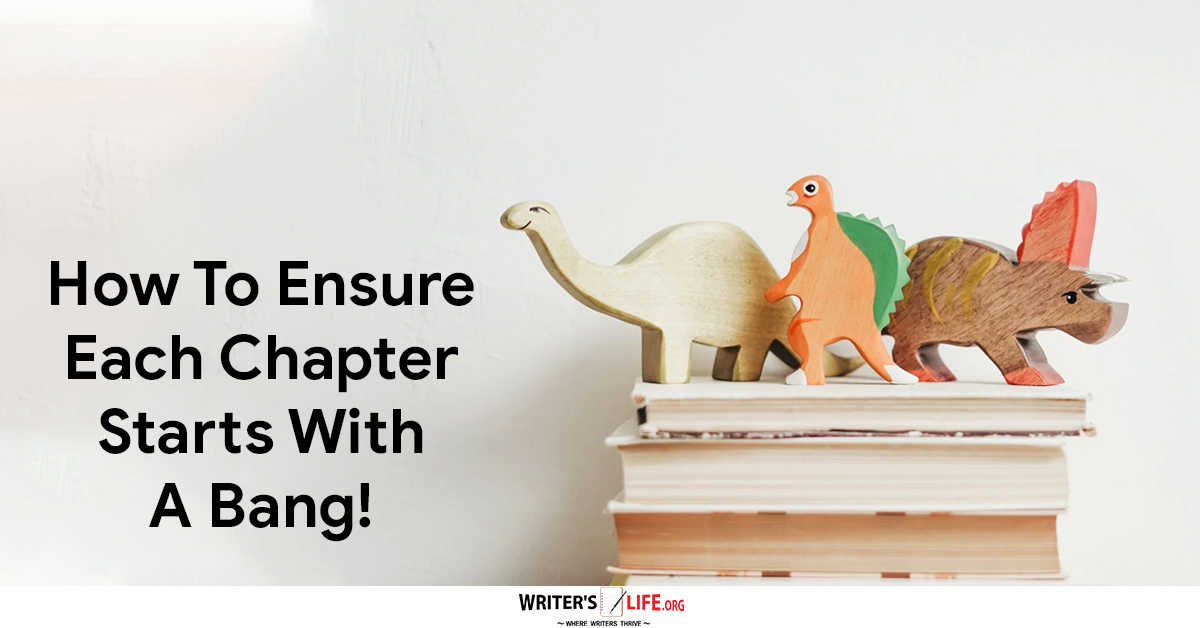- How To Tackle Jealousy In Creative Writing
- Common Submission Mistakes
- How To Stop Your Blog Becoming Boring
- The One Thing Every Successful Writer Has In Common
- How To Make Yourself Aware Of Publishing Scams
- Why Almost ALL Writers Make These Grammar Mistakes At Some Point
- 5 Tips For Authors On How To Deal With Rejection
- Top Mistakes to Avoid When Writing a Novel
- How to Avoid Common New Writer Mistakes
- 10 Mistakes New Fiction Writers Make
How To Ensure Each Book Chapter Starts With A Bang!

We all know that if you want your readers to keep on reading, it’s imperative that you pay careful attention to how you end your book chapters. Each chapter is a natural break in the story where a scene or certain events conclude. However, if you don’t end each chapter making readers want to read on, your book will fail.
However, it is perhaps, even more important, therefore, to begin each new chapter by reassuring your reader that they can get stuck right back into the story, and hook them further into the plot. So how do you make sure that you make the start of each chapter count? Here are some useful tips:
How to start each book chapter well!
Start with urgent action
Start each chapter in the middle of the action or ensure that the action begins as soon as the chapter does. If your reader feels like they are waiting around for things to get going they’ll soon find it difficult to engage. Here is a fantastic example of how action at the opening of a chapter can immerse your reader from the outset.
Anthony Doerr’s ‘ All the Light we Cannot See’, titled ‘Leaflets’:
At dusk they pour from the sky. They blow across the ramparts, turn cartwheels over rooftops, flutter into the ravines between houses. Entire streets swirl with them, flashing white against the cobbles. Urgent message to the inhabitants of this town, they say. Depart immediately to open country.
The action here is incredibly compelling as it has immediacy, visual excitement and also hints at critical impending action i.e. the evacuation. It moves the story forward and is clearly of importance, therefore the reader wants to know more.
Set the scene
Each chapter beginning should clearly establish where the characters are, both in time and space. The reader needs to be able to anchor themselves in the story and doing so quickly, especially if they are picking up the book from where they left off, is important.
Start a conversation
Another exciting way to open a chapter is by immediately writing a dialogue exchange between two characters. This can be a great way to introduce new characters into the story, and doing so when they are in mid-conversation can also help to create intrigue in the reader, as they’ll immediately be curious to know who these people are and what they are talking about.
Jump in time
A new chapter is also an opportunity to skip in time, taking the story in a different direction, revealing something about the past that’s affecting the present, or flash forward to future events that bring greater meaning to the story. Leaping over days, months, and years can be an exciting way for the author to exercise creativity. Just make sure that the reader is able to keep up.
Use vivid imagery
Great writing is all about enabling readers to picture the events of your story in their mind's eye. A great visual image could quickly immerse them in your world, shock them, please them, frighten them - whatever it is, it should strive to evoke an emotional response from the reader as well as move the story forward.
By using these tips, you can make sure that you start each chapter in a way that will engage your reader and keep the pace and action of your story alive! Do you have any tips about how to start your chapters with a bang? Share them with us here!
So now you know all about how to begin a book chapter well, why not discover how to end your chapters well too!
Get A Free Writer's Toolkit By Visiting https://www.writerslife.org/gid






























